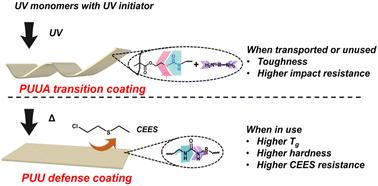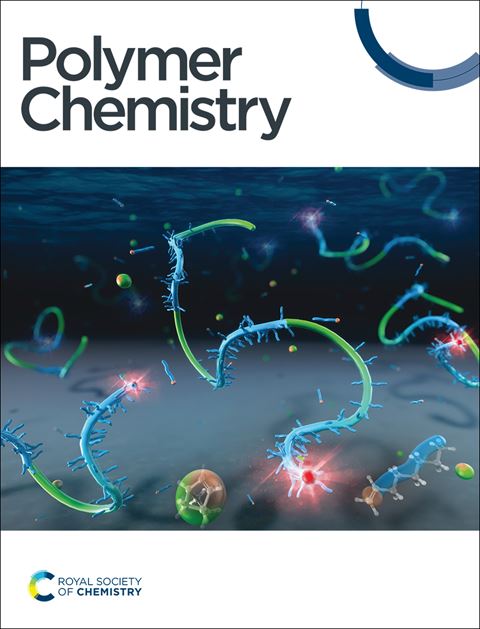Polyurethane–urea coatings derived from UV-cured polyurethane–urea acrylate transition coatings for enhanced resistance to chemical warfare agent simulants
IF 4.1
2区 化学
Q2 POLYMER SCIENCE
引用次数: 0
Abstract
Enhancing both the protective and mechanical properties of chemical-resistant coatings is a challenging task. In this study, ultraviolet (UV) cured polyurethane–urea acrylate (PUUA) containing hindered urea groups were prepared to function as a transitional coating during periods of non-use. This transitional coating offers both flexibility and impact resistance. Upon heat treatment, the PUUA network shifts from the transitional state to a defensive state, forming a polyurethane–urea (PUU) network with improved resistance to 2-chloroethyl sulfide (CEES), a mustard gas simulant. The effects of different heat curing agents (diamines) on the PUUs were investigated in terms of physical and chemical structures, curing mechanism, mechanical properties, coating properties, and chemical resistance. Compared to their PUUA counterparts, the PUUs with a higher glass transition temperature (Tg), lower crosslinking density and reduced surface N–H proportion showed increase resistance to CEES. Among the PUUs, PUU-PEA prepared from polyether-amine (PEA) exhibited superior chemical resistance and mechanical properties. These findings provide valuable insights for the development of UV-curable chemoprotective coatings.

聚氨酯-尿素涂料来源于uv固化的聚氨酯-丙烯酸脲过渡涂料,用于增强对化学战剂模拟剂的抵抗力
提高耐化学涂层的防护性能和机械性能是一项具有挑战性的任务。在这项研究中,紫外线(UV)固化聚氨酯-丙烯酸脲(PUUA)含有受阻脲基团,在不使用期间作为过渡涂层。这种过渡涂层提供了灵活性和抗冲击性。经过热处理后,PUUA网络从过渡状态转变为防御状态,形成聚氨酯-尿素(PUU)网络,提高了对2-氯乙基硫醚(CEES)的抗性,这是一种芥子气模拟剂。从物理化学结构、固化机理、力学性能、涂层性能和耐化学性等方面考察了不同热固化剂(二胺)对puu的影响。与PUUA相比,具有较高玻璃化转变温度(Tg)、较低交联密度和较低表面N-H比例的puu对CEES的抗性增强。在puu中,聚醚胺(PEA)制备的PUU-PEA具有优异的耐化学性和力学性能。这些发现为紫外光固化化学防护涂层的发展提供了有价值的见解。
本文章由计算机程序翻译,如有差异,请以英文原文为准。
求助全文
约1分钟内获得全文
求助全文
来源期刊

Polymer Chemistry
POLYMER SCIENCE-
CiteScore
8.60
自引率
8.70%
发文量
535
审稿时长
1.7 months
期刊介绍:
Polymer Chemistry welcomes submissions in all areas of polymer science that have a strong focus on macromolecular chemistry. Manuscripts may cover a broad range of fields, yet no direct application focus is required.
 求助内容:
求助内容: 应助结果提醒方式:
应助结果提醒方式:


